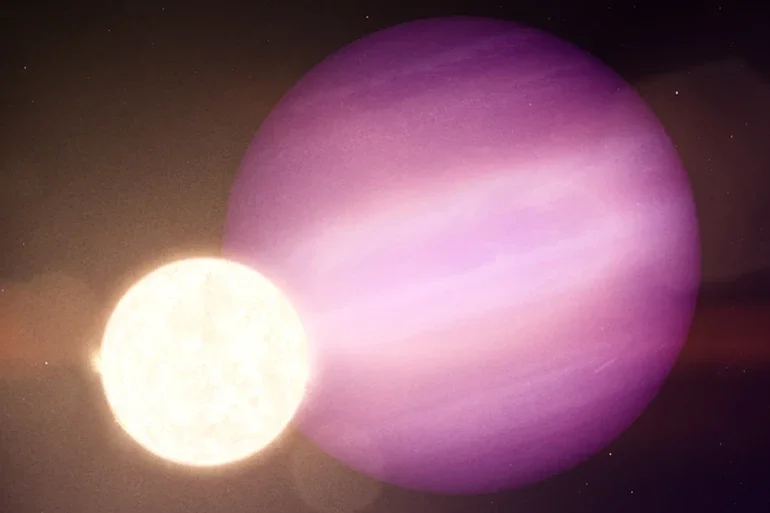
Chilling Discovery: “Forbidden Zone” Planet WD 1856+534 b Breaks Exoplanet Cold Record
In a stunning discovery that challenges our understanding of planetary survival, astronomers have confirmed the existence of a freezing-cold planet, WD 1856+534 b, orbiting a white dwarf star within the so-called "forbidden zone." This region, normally hostile to planets, has yielded a surprising resident whose existence defies conventional astronomical expectations.
The 5.8-billion-year-old white dwarf, located just 82 light-years from Earth in the constellation Draco, presented a puzzle when NASA's Transiting Exoplanet Survey Satellite (TESS) detected a Jupiter-sized object transiting the star every 1.4 days back in 2020. Initial uncertainty surrounded the nature of this object, questioning whether it was a massive planet or a low-mass brown dwarf star, especially given its incredibly tight orbit.
A groundbreaking study led by Mary Anne Limbach of the University of Michigan has now resolved this mystery using the powerful James Webb Space Telescope. The research confirms that WD 1856+534 b is indeed a planet, albeit one situated in a highly unexpected and precarious location. This confirmation marks the first time a planet has been confirmed within a white dwarf's “forbidden zone.”

The team meticulously analyzed the faint glow emanating from the orbiting object by subtracting a detailed model of the star's light. The analysis not only confirmed its planetary status but also revealed a surface temperature of approximately -125 degrees Fahrenheit, making it the coldest exoplanet whose light has been directly observed. As Limbach stated, the team attributes “this excess flux to the known giant planet in the system, making it the coldest exoplanet from which light has ever been directly observed." The planet's mass is estimated to be around 5.2 times that of Jupiter.
The presence of WD 1856+534 b in the "forbidden zone" raises intriguing questions about planetary survival. As stars like the sun evolve, they expand into red giants, typically engulfing and destroying any planets within two astronomical units. So how did this planet managed to survive? The answer, according to the researchers, lies in planetary migration. It is believed that WD 1856+534 b initially orbited at a greater distance before migrating inward, after the star had transformed into a stable white dwarf, influenced potentially by other planets or stellar bodies.
This discovery not only sets a new record for the coldest exoplanet observed directly but also provides valuable insights into the dynamic processes that shape planetary systems around dying stars. This significant finding is already generating widespread attention, outlets like Universe Today calling WD 1856 b “the coldest planet ever found,” and Space.com highlighting its survival inside a “dead star’s forbidden zone.”
What other secrets might be revealed as we further probe the boundaries of habitable and survivable planetary environments? Share your thoughts and theories in the comments below!